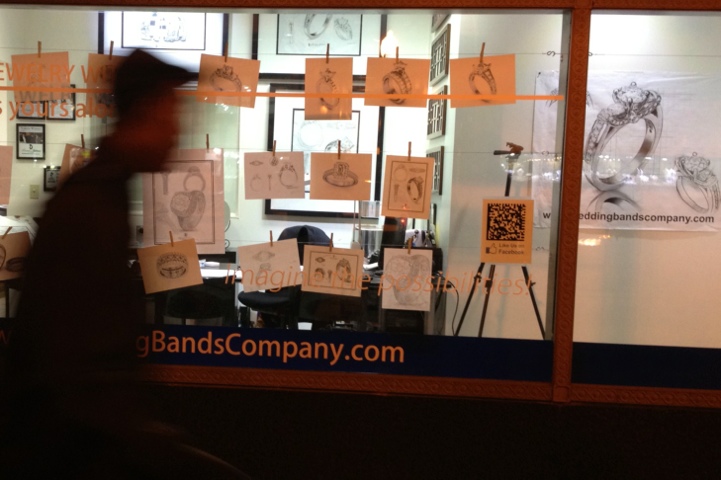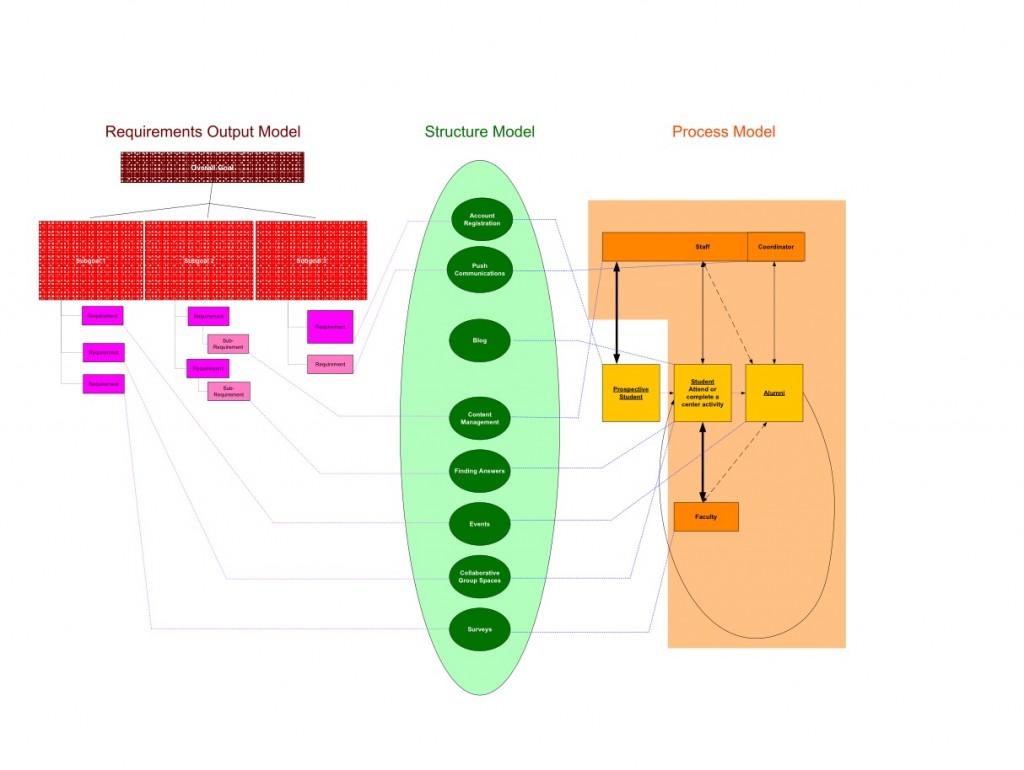Look at how this store sells people by merchandising sketches of the product. Emotive and personal, conveying a different attitude than just a product image might.
Archive for the ‘rendering’ Category
Sketching & merchandising expensive jewelry
Thursday, January 5th, 2012How to improve a wireframe/prototype review session.
Wednesday, December 15th, 2010Before you even start the review ask 3 questions.
- What kind of feedback would be most helpful for you, the designer, at this point?
- Do we all (anyone who is in the review session) understand the opportunity/problem? Don’t begin critiquing until everyone understands the opportunity or problem that it is addressing.
- At what stage is this review? Idea, Middle, or Final.
Then based on those answers ask the appropriate questions from one of the 3 sections below.
Idea sketch/stage?
- What job does this page do?
- What do you want someone to do after this page? Where do they go?
- What is the user’s goal on this page?
Middle Iteration Stage?
- What is the one thing on the page that generates the most value for the user? . . . for the business? How can you combine them?
- What can you make automatic? What do you know about the user so that they don’t have to think as much?
- Does the page pass the Push/Pull/Pass/Punt test?
Final Polishing Stage
- What can you remove? (Simplicity)
- How can you make “units” look more unified? Are the things that should be close together as close together as they can be? Are likely comparisons right next to each other?
- How can you enhance the one action/link that you most want people to use
See Also
4 Keys to a Successful Web Presence: Push, Pull, Pass, & Punt
My notes from The Laws of Simplicity by Maeda
How to Review Wireframes (one resource I was able to find that also addressed this topic)
Silent Choice of Click – Show everyone the first page of the wireframes. Ask each attendee to decide, silently, where their persona would click. Then discuss the choices and anything else you feel like discussing on that page.
Decision Makers Don’t Have Time for Wireframes
Wednesday, September 2nd, 2009The people who make the funding decsions don’t have time to read and “understand” the usual documents such as use-cases, detailed wireframes, and PRDs. Some common situations are:
- No one has the time to print out let alone read the use-case document, AKA use-case book.
- The wireframes are too detailed to follow for those who don’t live and breath them.
- The PRD is really just a cut&paste from a previous PRD.
What can you do? Take a look at the Function-Structure-Process Diagram.
The goal of this diagram is to do five things.
- Show a clear understanding of the goals (function) of the business or organization.
- Show a clear understanding of the process (activities) for the users and how they change over time. Change over time could involve learning something (as in this example), building brand awareness or loyalty, or conquest of new customers.
- Show the overall structure of the solution you are proposing which could be a web presence or web application.
- Show which specific parts of the structure you are proposing support which functions (goals.)
- Show which specific parts of the structure you are proposing support which processes (activities) that the users are engaged in.
References and Further Reading (esoteric warning)
Yes, this is systems thinking with plurality.
Design and Philosophy by Peter Kroes, Pieter E. Vermaas, Andrew Light and Steven Moore
Audio Book, kids, & Sketching
Thursday, April 30th, 2009Idea
At lunch with Mario Bourque, Todd Warfel, Chris Geyer, and Jamie Tompson at Cafe Cuba in Old City.
Mario talking a lot about his kids.
The idea came up about when listening to an audio book to have the kids draw “pictures” as the story is being told. I wonder what will happen? Dave Gray had us do something similar to this at Overlap, and I have done “stretching-exercises” similar for different teams. Sometimes the kids and I sit and I say, “what do you want me to draw” and they shout things out and I draw them. Great fun for them, and great fun for me too. Or we will all sit there and draw whatever comes to our mind. This exercise will change it a bit so that we are all having the same stimulus. I wonder if afterwards we will start to “critique” each other’s work.
I will try it out and post some results.

